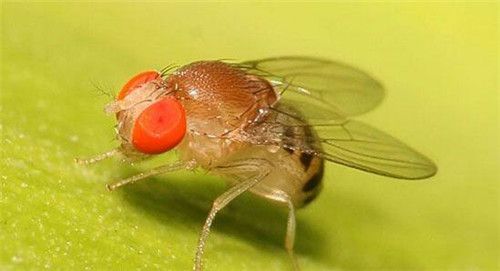(单词翻译:单击)
听力文本
This is Scientific American — 60-Second Science. I'm Christopher Intagliata.
The goal for a lot of tech companies today: figure out what you, their customer, want next, before you even ask. It's driven by something called similarity search.
"If you go to YouTube and you watch a video they're going to suggest similar videos to the one you're watching. That's similarity search. If you go to Amazon and look for similar products to the one you're going to buy, that's similarity search."
Saket Navlakha, a computer scientist at the Salk Institute. He says we do similarity searches, too, for example, when we scan faces in a crowd for the one we know. And even fruit files do a version, related to smell:
"So the fly is having to solve a similar problem, of kind of searching through its database of previous experiences and previous odors it has smelled, to determine what should be the most appropriate behavioral response to that odor."

But flies tag incoming odors differently from the way modern search algorithms parse similarity. A small group of neurons makes an initial evaluation of the smell. Then a much larger set of neurons is activated to make a final decision about the smell. Rather than the way a computer similarity search does it, taking something with many dimensions, and simplifying it down to a few.
So Navlakha and his colleagues tweaked computer similarity search functions to do it fly style. And then pitted the fly-inspired algorithms against conventional ones. And the biologically inspired code won out, better at telling "like" from "unlike" on an image-similarity test.
"You know evolution figured it out, it figured out a very elegant solution to this very important problem." The report is in the journal Science.
Navlakha says he and his team are looking to partner with tech companies now, in hopes of endowing machines with the time-tested problem-solving abilities of the brain. Even if it's a fruit fly brain.
Thanks for listening for Scientific American — 60-Second Science. I'm Christopher Intagliata.
参考译文
这里是科学美国人——60秒科学。我是克里斯托弗·因塔利亚塔。
现在许多科技公司的目标是:在你开口之前,找出你,也就是他们的客户接下来需要什么。这是由一种名为“相似性搜索”的技术所推动的。
“如果你在YouTube上看了一个视频,他们会推荐你看类似的视频。这就是相似性搜索。如果你在亚马逊网上查看了与你要买的物品相似的产品,那就是相似性搜索。”
索尔克研究所的电脑科学家沙克特·纳卡拉说道。他表示,我们也会做相似性搜索,比如,我们会在人群中寻找我们认识的人。甚至果蝇也会对味道进行“相似性搜索”:
“果蝇必须解决一个类似的问题,即通过检索之前的经历和之前闻到的味道,来确定对于这种气味最合适的行为反应。”
但是,果蝇对气味的标记,与现代搜索算法不同。果蝇的小部分神经元对气味进行初步分析。然后,更多的神经元被激活对气味做出最终的决定。与计算机从多方面操作的相似性搜索不同,果蝇将检索简化。
所以,纳卡拉和同事们调整了电脑的相似性搜索功能,使其类似于果蝇的做法。然后将由果蝇激发的灵感所产生的算法同传统算法进行比较。结果,生物激发的代码获胜,在分辨喜欢和不喜欢的类似图片测试中的表现更好。
“进化找到了一个非常优雅的方案来解决这个非常重要的问题。”这项研究结果发表在《科学》期刊上。
纳卡拉表示,他和团队计划与科技公司合作,希望可以让机器具备用大脑解决问题的能力,而且这种能力是经过时间检验的。即使是果蝇的大脑也可以。
谢谢大家收听科学美国人——60秒科学。我是克里斯托弗·因塔利亚塔。
译文为可可英语翻译,未经授权请勿转载!
重点讲解
重点讲解:
1. figure out 想出;理解;弄清;
例句:No one could figure out how he got to be so wealthy.
谁也不知道他怎么会变得如此富有。
2. rather than 而非;胜于;而不是;
例句:It exists in dreams rather than actuality.
它存在于梦境而非现实中。
3. win out (经过比赛或斗争)获胜,胜出;
例句:Sometimes perseverance does win out.
有时候坚持就是胜利。
4. even if 即使;尽管;纵然;
例句:Even if the weather's awful there's lots to do.
即使天气很差,也还有好多事情可做。


